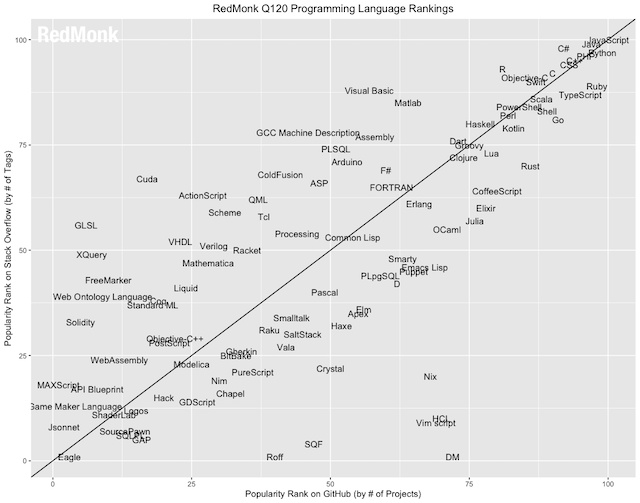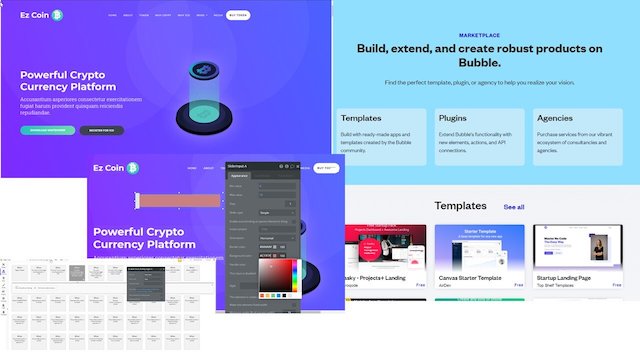Editor’s Note: The DBizInstitute is excited to share this article, written by Dr. Setrag Khoshafian, with our community and in advance of his new book release. Keep an eye on our website as we share additional articles in the coming months written by Setrag, as well as a pending Meet the Author webcast to discuss his new book ‘How to Alleviate Digital Transformation Debt’ expected to air Fall 2021. This article was originally published on CognitiveWorld.com on September 27, 2020.
This is the fourth installment in a ten-part article series on Digital Transformation Debt, with a particular focus post-Covid-19. Part 1 focused on Culture, part 2 delved deeper into Operational Excellence and inter-enterprise Value Streams As A Service (VSaaS), and Part 3 explained the spectrum of Automation and the shifts post-Covid-19. The Covid-19 pandemic is encouraging many enterprises to re-consider their digital transformation and modernization initiatives thus far, especially in accelerating the development and deployment of innovative applications. The emergence of Citizen Developers leveraging Low Code/No Code platforms has profound transformative implications both for Enterprises and Startups.
The Evolution of Programming

Low Code/No Code is the next phase in the evolution of programming (a.k.a. coding). The transition from assembly, to high-level procedural programming (i.e., C and Pascal) and then from high-level procedural languages to object orientation (i.e., Java and C#) enabled us to achieve substantial productivity gains. There are now tens of millions of developers for programming languages such as Java, C#, JavaScript, Python, and a harvest of relatively new and emerging programming languages such as Swift, Go, Kotlin, and many others. With older development approaches using, say, Java, C#, or JavaScript, the programmer always needs to learn and write the cumbersome text of the Code and debug it. There are many programming languages, but they all share this core inefficiency. Traditional software development is clunky, slow, and error-prone. It keeps the developer and business stakeholders in their silos. The lack of alignment between what is required and what ends up as an application is considerable. This has been a source of contention and frustration. The paradigm of an initial design of the programming model in an Interactive Development Environment (IDE) and then coding via the programming language syntax has remained, by and large, unchanged.
The following image illustrates the popularity of programming languages in 2020.

Looking at this 2020 ranking–and many other analyses of popular programming languages–one gets the impression that this all there is when it comes to “programming” to develop applications in different domains. Universities, and even High Schools, teach programming for one or more of these languages.
Low Code/No Code is completely missing in programming language rankings. They are, of course, different than conventional programming languages, with their specific syntax and semantics, but they achieve the same objectives: The ability to develop and deploy scalable applications while supporting computational-complete constructs with easy to use drag and drop interfaces.
We are now witnessing the emergence of Low Code/No Code as a programming paradigm that provides tremendous productivity advantages—critical in the post-Covid-19 era.
As the name suggests, Low Code/No Code platforms enable the development of applications with little or no coding involved. The delineations between Low Code and No Code are somewhat fuzzy, and they are continuously getting murkier. But, in a nut-shell, No Code targets business stakeholders (a.k.a. Citizen Developers) and subject-matter experts (also Citizen Developers) who can build business applications with no coding—drag and drop and easy to use constructs. Low Code involves some coding and usually associated with the productivity of technical developers or programmers.

Low Code/No Code is transformational and a tremendous enabler for agility, and it is also critical in the post-Covid-19 era for both enterprises and startups. Organizations continuously need to be adjusting and antifragile. They need to be enterprises and startups in-motion.
Forrester predicts Low Code will grow at 40% and become a $21.2 Billion market by 2022. According to Gartner, 65% of application development will be Low Code by 2024. Low Code/No Code is not a hype and it is also not a panacea. It does have its challenges, but it is revolutionary and is accelerating innovations for both enterprises and startups.
The achievements in advances of programming language pale in comparison to the productivity gains one could realize when developing with Low Code/No Code. Low Code/No Code enables robust, fast, and efficient development of applications in all categories. I was involved in a comparative productivity benchmark test between traditional development (using Java) and a model-driven Low Code/No Code development project. The results were impressive: 5X to 7X productivity improvement with Low Code/No Code model-driven development. However, the typical productivity gains from Low Code/No Code is around 75%—still a formidable gain.
Internal applications, as well as customer-facing applications, can be built with Low Code/No Code.
- For Startups, Low Code/No Code can achieve accelerated development of Minimum Viable Products (MVPs).
- For established Enterprises, Low Code/No Code can help Digital Transformation initiatives to accelerate the needed digital modernization and change.
Citizen Developers
Despite many advances in productivity tools, methodologies, and techniques, most organizations still suffer from Business-Technical, Developers-Operations silos. Low Code/No Code is accelerating innovations for both enterprises and startups: It provides a common inter-silo “language” for the different functional units within the organization.
Low Code/No Code is not so much about the tooling but more an enabler for the Culture of innovation and digital transformation—a cultural shift to empower the business stakeholder and obliterate silos
The anti-fragile and anti-silo transformation are critical in the post-Covid-19 era.

So, who is the Citizen Developer? It is you! Founders in startups, Business stakeholders in Enterprises, Operations subject-matter experts, and yes, conventional programmers are Citizen Developers that benefit from Low Code/No Code. The new generation of application development environments is getting much easier to use, allowing anyone – especially the younger tech-savvy generation—to build small and robust enterprise applications.
Citizen Developers involving stakeholders and subject-matter experts can be involved in all phases and iterations of robust, continuously improving methodologies. As illustrated here: Citizen Developers in prioritizing MVPs or applications, the development of the MVP, the productization of the application, monitoring, and continuously improving. For instance, a Founder in a startup can prioritize and build an MVP (typically in collaboration with other participants). They can be involved in, say, enhancing the UI in the development iterations. Post-deployment, subject matter experts can assess the performance as well as the functionality of the application and introduce additional business logic themselves – as Citizen Developers. The governance and methodology best practices for Low Code/No Code are critical. There will typically be a learning curve for selected Low Code/No Code platforms.
Low Code/No Code Platforms
Low Code/No Code is a revolution: It enables robust, fast, and efficient development of applications in all categories; Web, Mobile, Enterprise, etc. Low Code/No Code can be leveraged for internal as well as customer-facing applications development. Low Code/No Code platforms do have their specific underlying conventions and core models. So, there is a learning curve – it will not be easy from the get-go. But once the various stakeholders master the tool, the productivity gains will be considerable.
There are many styles and types of Low Code/No Code platforms. Some of these have evolved from predecessor model-driven platforms that have attempted to introduce interactively and drag-and-drop easy to use features. Here is a listing of different styles and options of Low Code/No Code platforms:
- Web & Mobile Application Low Code/No Code Platforms
- Business Process Management Low Code/No Code Platforms
- Database Management Low Code/No Code Platforms
- Automated Integration Low Code/No Code Platforms
- Niche Low Code/No Code Platforms: gaming apps, voice apps, vertical apps, etc.
Model-driven development platforms – especially in the Business Process Management category – were the predecessors of Low Code/No Code. BPM evolved to intelligent Business Process Management (iBPM), with more drag and drop easy to use User Interfaces (UI): supporting Low Code/No Code process-centric application development – primarily for operational excellence and Automation of value streams.

The spectrum of Low Code/No Code platforms involves incumbents, especially from iBPM, that have incorporated additional capabilities to target Citizen Developers. But more exciting, there is a new harvest of impressive and easy to use Low Code/No Code platforms that could potentially provide disruptions to the Low Code/No Code ecosystem. Examples of these platforms include: Bubble.io, Zapier, Webflow, Integromat, Graphhy, JotForm, Kgbase, Parabola, and Unqork.
This is an exciting era for Low Code/No Code – a perfect fit for the post-Covid-19 era.
Recommendation: Citizen Developers for Accelerated Development and Innovation
Low Code/No Code platform and solution market are fragmented and confusing. Yet, they provide tremendous advantages when developing and deploying innovative applications. The speed of development could be existential – especially in the post-Covid-19.
Here are the top recommendations for Low Code/No Code:
- Platform Selection – balancing capability with cost: The range of Low Code/No Code platforms is impressive. It is also fragmented and confusing. There are taxonomies and reports – but typically, they do not cover all the platforms. Also, it is most likely multiple Low Code/No Code platforms will be needed for an innovative application. Pricing and total cost of ownership will also be critical – as some of the platforms are quite expensive. As noted above, there are different types (process-centric, Web App, database-centric, mobile-centric, etc.) of Low Code/No Code platforms that must be carefully analyzed.
- Reskill and Upskill for Low Code/No Code: Organizations need to leverage the lockdown and the gain in time due to work-from-home directives to upskill and reskill their employees, especially in selected and Low Code/No Code platforms. Each platform has a learning curve: some are more difficult than others; some platforms have robust development, education, and support communities. The innovation team needs to consider all this and other dimensions of Low Code/No Code.
- Citizen Developer Culture: This is extremely important. Some business stakeholders in enterprises or founders in startups might be reluctant to get involved in “development.” A new generation of tech-savvy workers is entering the workforce. At the same time, the new generation of Low Code/No Code application development environments are getting much easier to use – allowing Citizen Developers to build or collaborate in building robust, innovative applications.
- Design Sprints – being lean and effective: There is a perfect fit either during or immediately post the 4-5 day methodology to leverage Low Code/No Code for a Minimum Viable Product (MVP). The end-user testing can – and most likely will – end up with enhancements that could be easily and speedily achieved with a Low Code/No Code platform.
This is a ten-part article series centered around Digital Transformation Debts in the wake of the Covid-19 pandemic. Be sure to check out all ten articles!

















